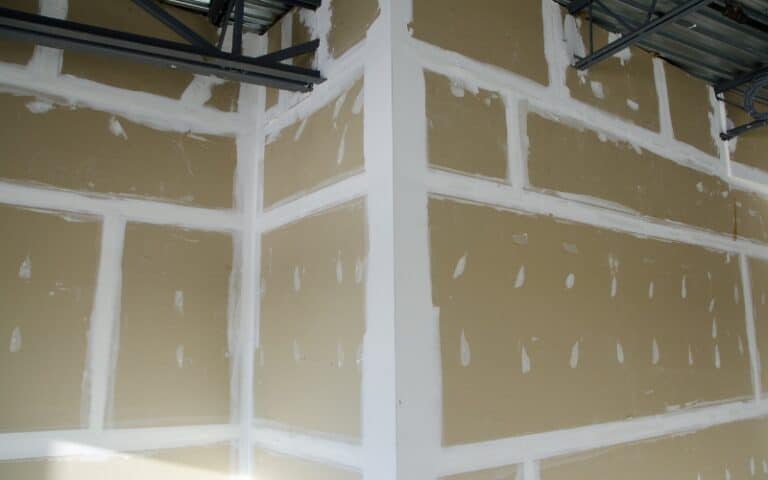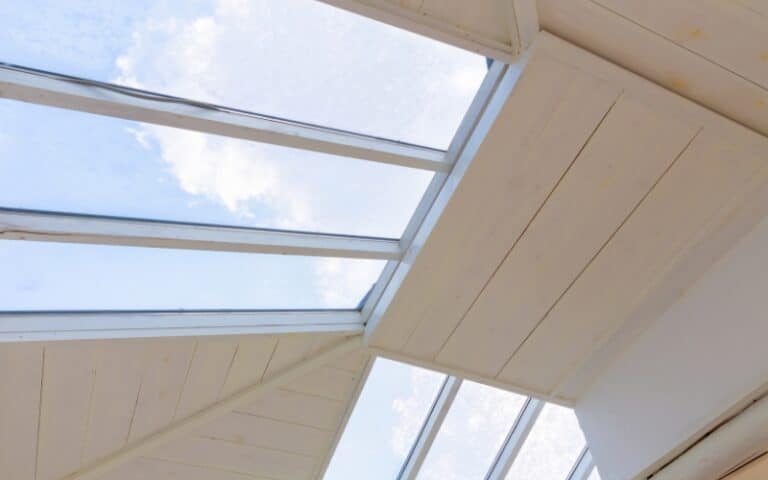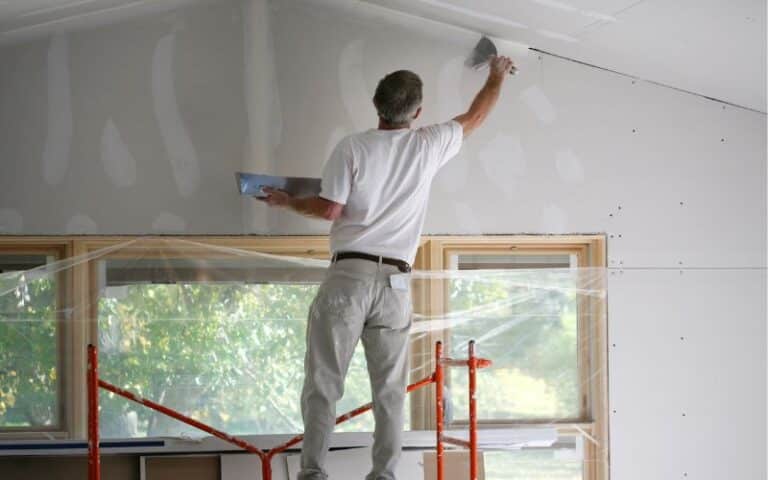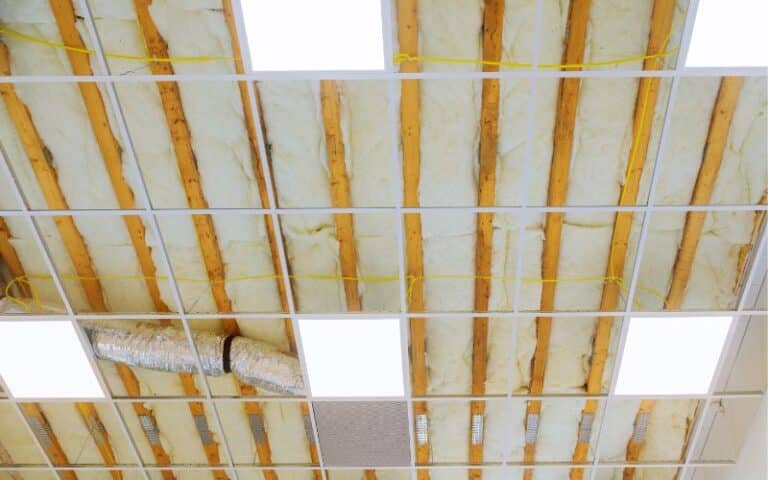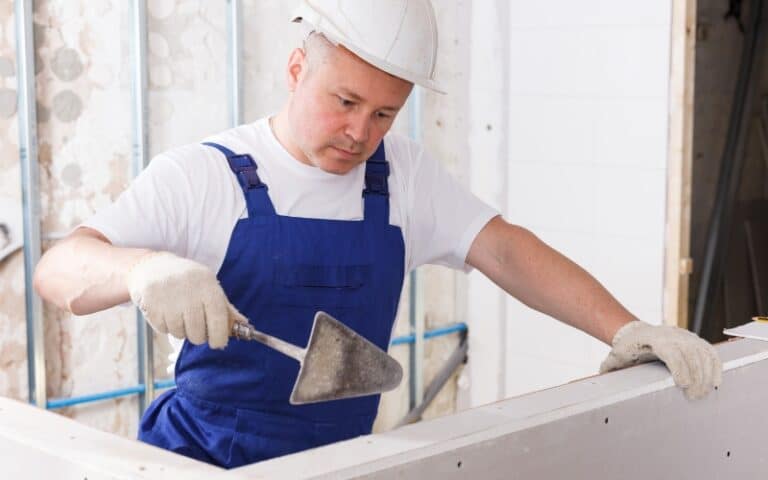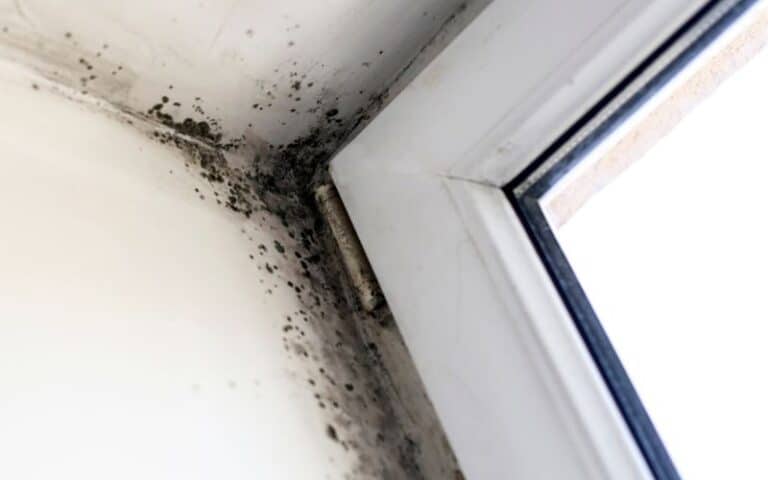Drywall is everyone’s go-to material for installing on the interiors of walls and ceilings. Also, it comes in varying thicknesses and sizes, depending on the type of project you want to embark on.
Although most manufacturers often include standard sizes to make selecting the appropriate size and thicknesses less, some don’t.
So, in this article, we’ll give detailed information on some critical drywall thicknesses and cover more related topics.
The 3/8-inch drywall is ideal for curved walls, creating patches, and redesigning partitions. It’s thinner than a quality 1/2-inch drywall but slightly thicker than a 1/4-inch drywall. You can often use its sturdiness to repair drywall that needs patching.
In this article, you’ll better understand different drywall thicknesses and what parts of the home to use them on, like walls, ceilings, etc.
Ready for a Drywall Quiz?
Is 3/8 Drywall Good for Walls?
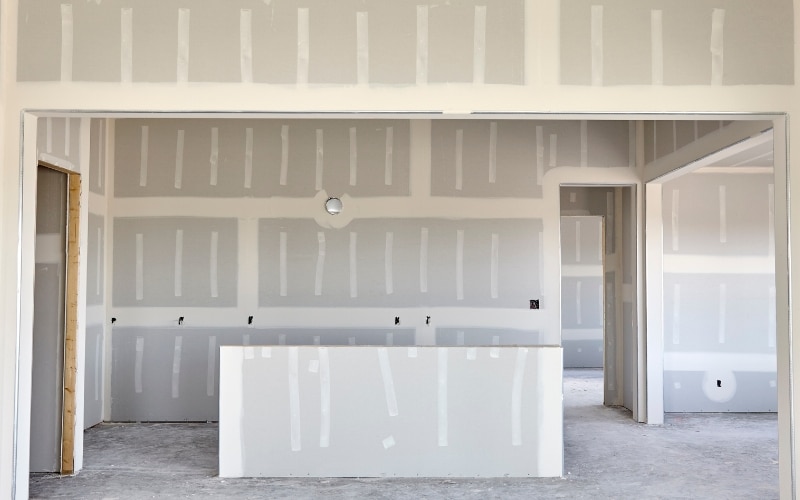
Although 3/8-inch drywall is more cost-effective than most drywall inches, there are better choices for walls.
And this is because, based on joist spacing, you’ll still have to spend more on installing the 3/8 drywall, as it gets harder to install, especially on ceilings.
Also, the material of a 3/8 is so brittle that merely leaning on it can be enough to break it. So, it’s best to use this drywall as an overlay for existing drywall damaged beyond repairs.
But ensure that you use drywall nails or screws at least every 7 to 12 inches to prevent them from sagging.
However, local codes permit you to use screws for every 16 inches on conventional drywalls.
Furthermore, it would be best if you didn’t use a 3/8-inch drywall on your walls.
It’s more commonly used for ceilings because it’s relatively lightweight and easy to install. Also, the standard thickness for walls is 1/2 inch.
This thickness provides sufficient strength and rigidity to support the weight of the drywall and any additional finishes that may be applied, such as paint or wallpaper.
Thus, it’s always best to use 1/2-inch drywall if you install it on a wall. This thickness is widely available and is suitable for most residential and commercial construction projects.
The table below shows a few differences between a 3/8-inch and 1/2-thickness of drywall, which will guide you in making a better choice for your walls.
| 3/8-inch Drywall | 1/2-inch Drywall |
|---|---|
| It’s more versatile and durable | It’s more economical |
| It’s thicker and more robust | It’s lightweight and best for retrofit projects |
| Has a higher level of sound insulation | It hides defects and imperfections to a certain level. |
| Has a smoother finish | More susceptible to wear and tear. |
Conversely, if you’re working on a project requiring a higher level of sound insulation, consider using 5/8-inch drywall.
This thickness is more effective at blocking sound and is often used in areas where noise reduction is a priority, such as in multifamily housing or commercial buildings.
Additionally, a 5/8-inch drywall has an excellent fire rating and is a great option for shop space due to its high resistance to fire and how weatherproof it tends to be.
In summary, due to its relatively low strength and rigidity, you shouldn’t use 3/8-inch drywall on walls.
Instead, for most residential and commercial construction projects, 1/2-inch drywall is the standard thickness and is suitable for use on walls.
If you need a higher level of sound insulation, consider using 5/8-inch drywall.
Can You Use 3 /8 Drywall for Curved Walls?
Yes, you can use 3/8-inch drywall for curved surfaces. For example, drywall of 3/8 inches can be cut and shaped to fit curved surfaces, such as arched doorways or curved walls.
You can use a 3/8 inch thick drywall panel for curved walls because it’s more flexible and easier to bend than a thicker panel.
This drywall thickness makes it possible to smoothly follow the wall’s curvature, resulting in a seamless and professional finish.
In addition to its flexibility, 3/8 inch drywall is also lighter and easier to handle than thicker panels, making it easier to install in tight or difficult-to-reach spaces.
It’s also a good choice for walls that you can finish with a textured finish, as the thin panel is easier to work with and produces a more consistent finish.
Overall, 3/8 inch drywall is a good choice for curved walls because it’s flexible, lightweight, and easy to work with, resulting in a professional and seamless finish.
To install 3/8 inch drywall on a curved wall, you’ll need to cut to the desired shape and size to fit the curvature.
Then, you can use a utility knife, circular saw, or jigsaw to make curved cuts in the drywall.
Once you cut the drywall to fit the curve, you can attach it to the surface using drywall screws or nails. Then, cover the seams with joint compound and drywall tape.
Nevertheless, it’s important to note that 3/8-inch drywall is relatively thin and may only be suitable for some curved surfaces.
For instance, if the curve is very steep or the surface will be subject to many impacts, you may want to use thicker drywall or wall-covering material.
Generally, it’s best to consult a professional or refer to the manufacturer’s recommendations when installing drywall on a curved surface.
They can guide you on the appropriate type and thickness of drywall and installation techniques.
Can You Use 3 /8 Drywall for Shower Walls?
No, it’s best not to use 3/8-inch drywall for shower walls. This drywall thickness isn’t suitable for wet environments such as showers because it needs to be water-resistant.
Additionally, this thickness of drywall can become easily damaged when exposed to a lot of moisture.
It must be thick enough to provide adequate support and durability in a wet environment with high humidity.
Showers are subject to a lot of moisture, which can cause the drywall to become soft, weaken, and even disintegrate over time.
So, using thicker, water-resistant drywall or cement board is a better choice for shower walls because it’s more resistant to moisture and will provide a more durable, long-lasting surface.
Similarly, it’s important to use a water-resistant material such as cement board or moisture-resistant drywall like green or blue board.
These types of drywall are designed to resist moisture and are suitable for use in showers and other wet areas.
They are also typically thicker than regular drywall, which helps prevent water exposure damage.
Therefore, if you’re installing drywall in a shower, it’s always best to ensure that it’s properly sealed and protected from moisture.
And you can do this by applying a waterproofing membrane or waterproof paint to the surface of the drywall.
Additionally, you should ensure that you install the drywall properly and seal all seams and joints to prevent water from seeping through.
Is 3/8 Drywall Good for Ceilings?
Yes, you can use a 3/8-inch thickness of drywall for a ceiling. Although you can commonly use a 3/8 inch drywall for walls, you can also use them for ceilings in certain situations.
However, since they may begin to sag, so, to avoid this, ensure that you use drywall of at least 16 inches to provide support to the frame.
Also, avoid using a water-based sealant as they may not provide enough adhesion and the certain level of bonding strength a surface needs, especially a ceiling.
The sealant on a ceiling is often subjected to gravity and is more likely to come loose than any other surface over time.
And this is why it’s better to use an oil-based or solvent-based sealant to provide the ceiling with the right amount of bonding.
Also, factors to consider when deciding whether to use 3/8 inch drywall for a ceiling include the room’s size, height, and the amount of traffic the ceiling will be subject to.
One advantage of using 3/8 inch drywall for ceilings is that it’s slightly thinner and lighter than 1/2 inch drywall, the most common thickness used for ceilings.
This drywall thickness can make it easier to handle and install, especially in tight spaces or uneven surfaces.
Despite this, 3/8 inch drywall may not be as durable as 1/2 inch drywall, especially if the ceiling is subject to heavy traffic or impacts.
It may also be more prone to sagging or developing cracks over time. Generally, it’s best to use the thickest drywall that’s practical and appropriate for the specific application.
However, if you need clarification on whether 3/8 inch drywall is suitable for your ceiling, you should consult a professional contractor or building expert for guidance.

